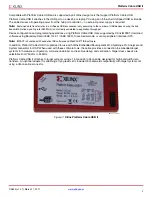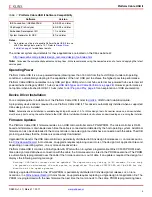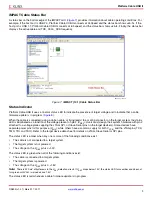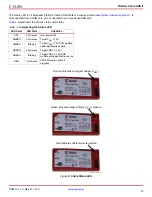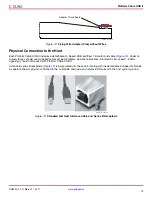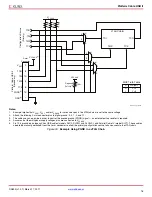
DS593 (v1.2.1) March 17, 2011
PN 0011051 04
1
© Copyright 2008–2011 Xilinx, Inc. XILINX, the Xilinx logo, Virtex, Spartan, ISE, and other designated brands included herein are trademarks of Xilinx in the United States and
other countries. All other trademarks are the property of their respective owners.
Features
•
High-performance FPGA and PROM programming and
configuration
•
Includes innovative FPGA-based acceleration
firmware encapsulated in a small form factor pod
attached to the cable
•
Leverages high-speed Slave Serial mode
programming interface
•
Recommended for prototyping use only
•
Easy to use
•
Fully integrated and optimized for use with Xilinx®
iMPACT software
•
Intuitive multiple cable management from a single
application
•
Supported on the following operating systems:
-
Microsoft Windows XP Professional
-
Microsoft Windows Vista
-
Red Hat Enterprise Linux
-
SUSE Linux Enterprise
•
Automatically senses and adapts to target I/O
voltage
•
Interfaces to devices operating at 5V (TTL), 3.3V
(LVCMOS), 2.5V, 1.8V and 1.5V
•
Intuitive flyleads-to-cable interface labeling
•
Reliable
•
Backwards compatibility with Platform Cable USB,
including Pb-Free (RoHS-compliant)
•
USB Integrators Forum (USB-IF) certified
•
CE and FCC compliant
•
Leverages industry standards, including JTAG
Boundary-Scan IEEE 1149.1, SPI and USB 2.0
•
Programs and configures all Xilinx devices
•
XC18V00 ISP PROMs
•
Platform Flash XCF00S/XCF00P/XL PROMs
•
All Virtex®, Spartan® and XC4000 FPGA families
•
XC9500 / XC9500XL / XC9500XV and
CoolRunner™ XPLA3 / CoolRunner-II CPLDs
Note:
Xilinx iMPACT software is required for
programming and configuration
•
Third-party PROM device programming support
•
Directly programs selected Serial Peripheral
Interface (SPI) flash memory devices
•
Indirectly programs selected SPI or parallel flash
memory devices via FPGA JTAG port
•
Highly optimized for use with Xilinx design tools
•
ISE® Foundation™ Software
•
Embedded Development Kit
•
ChipScope™ Pro Analyzer
•
System Generator for DSP
Platform Cable USB II Description
Much more than just a simple USB cable, Platform Cable
USB II (
) provides integrated firmware (hardware
and software) to deliver high-performance, reliable and
easy-to-perform configuration of Xilinx devices.
Platform Cable USB II attaches to user hardware for the
purpose of configuring Xilinx FPGAs, programming Xilinx
PROMs and CPLDs, and directly programming third-party
SPI flash devices. In addition, the cable provides a means of
indirectly programming Platform Flash XL, third-party SPI
flash memory devices, and third-party parallel NOR flash
memory devices via the FPGA JTAG port. Furthermore,
Platform Cable USB II is a cost effective tool for debugging
embedded software and firmware when used with
applications such as Xilinx's Embedded Development Kit
and ChipScope Pro Analyzer.
Platform Cable USB II is an upgrade to and replaces
Platform Cable USB. Similar to its popular predecessor,
Platform Cable USB II is intended for prototyping
environments only. Platform Cable USB II is backwards
35
Platform Cable USB II
DS593 (v1.2.1) March 17, 2011


